Kingdom Of Judah: Government Complex And 120 Seal Impressions Stamped On Jars – Unearthed
Conny Waters - AncientPages.com - A significant administrative storage center from the days of Kings Hezekiah and Manasseh (8th century to the middle of the 7th century BC) has recently been unearthed during the archeological excavations in the Arnona neighborhood of Jerusalem.
'To the King' - two-winged seal impression. Image credit: Yaniv Berman, Israel Antiquities Authority
Among the 2,700-year-old finds, there were more than 120 inscribed seal impressions on jars handles at the storage facility. In the First Temple times, the jars were filled with food collected as taxes for kings Hezekiah and Menashe (8th century to the middle of the 7th century BC).
The seal impressions contain ancient Hebrew script and many of the handles bare the inscription "LMLK" - (belonging) to the King- with the name of an ancient city, while others feature the names of senior officials or wealthy individuals from the First Temple Period.
This is one of the largest and most important collections of seal impressions ever uncovered in archaeological excavations in Israel, and they will help to better understand the tax collection system in the period of the Judean monarchs, according to press release.
This is one of the most significant discoveries from the period of the Kings in Jerusalem made in recent years. At the site we excavated, there are signs that governmental activity managed and distributed food supplies not only for a shortage but administered agricultural surplus amassing commodities and wealth," according to Neria Sapir and Nathan Ben-Ari, directors of the excavations that take place only three kilometers (1.8 mile) outside the Old City.
 Clay figurines of women and animals found at the site. Photography: Yaniv Berman, Israel Antiquities Authority.
Clay figurines of women and animals found at the site. Photography: Yaniv Berman, Israel Antiquities Authority.
Evidence shows that at this site, taxes were collected in an orderly manner for agricultural products such as wine and olive oil.
“The site once dominated large agricultural plots and orchards of olive trees and grapevines which included agricultural industrial facilities such as winepresses for winemaking. The site is dated to a period documented in the Bible by upheavals such as that of the Assyrian conquest campaign - under the command of King Sennacherib in the days of King Hezekiah.
“It may be that the government economic provisions indicated by the stamp seals are related to these events however, the excavation revealed that the site continued to be active after the Assyrian conquest. Moreover, the array of stamped seals indicated that the system of taxation remained uninterrupted during this period.
 A mound of stones: Image credit: Yaniv Berman, Israel Antiquities Authority
A mound of stones: Image credit: Yaniv Berman, Israel Antiquities Authority
“It is interesting to note that some of the storage jar handles are inscribed with the names of senior officials and wealthy individuals from the Kingdom of Judah - Naham Abdi, Naham Hatzlihu, Meshalem Elnatan, Zafan Abmetz, Shaneah Azaria, Shalem Acha, and Shivna Shachar. These names appear on storage jar handles at various sites across the Kingdom of Judah and attest to the elite position of those whose names are impressed on the jars.
“It is estimated that these are senior officials who were in charge of specific economic areas, or perhaps wealthy individuals at that time - those who owned large agricultural lands, propelled the economy of their district and owned private seals."
 Aerial image of the Arnona neighborhood excavation of a 2,700-year-old administrative complex in Jerusalem (Yaniv Berman, Israel Antiquities Authority)
Aerial image of the Arnona neighborhood excavation of a 2,700-year-old administrative complex in Jerusalem (Yaniv Berman, Israel Antiquities Authority)
The excavators also posit that a large number of seal impressions at the site clearly indicate that during the latter part of the Kingdom of Judah, the governmental activity took place in the area south of the City of David. It is also possible that this governmental activity was related to the nearby site of Ramat Rachel, which may be identified with the palace of the Kings of Judah and/or as an administrative center.
The majority of the seal impressions uncovered contain the ancient Hebrew letters "LMLK." These impressions are characterized by a sun disk, flanked with two wings. Above the sun disc appears the word 'to the King' and below one of four cities in the kingdom of Judah: Hebron, Ziph, Socho or Mmst. According to Sapir and Ben-Ari, while the identification of Hebron, Ziph and Socho can be identified with known ancient cities in Judea in the Hebron Hills area, the identification of Mmst is still controversial."
During the ancient period, for reasons not understood, the large building at the site was covered over with a massive pile of flint stones forming an artificial hill measuring 20 meters high and extending over seven dunams (!). Even today, this huge pile of stones stands out from the surrounding hills and is visible from a great distance.
According to the researchers, "These artificial stone hills have been identified at several sites in Jerusalem and are a phenomenon to the end of the First Temple period and have aroused the curiosity and fascination of Jerusalem researchers since the beginning of archeological research in the area. Nevertheless, the reason for the huge effort made in stacking them over many acres remains an unresolved archaeological mystery."
Another find that sheds light on the character of the period is a collection of figurines – clay statuettes. According to archaeologists Sapir and Ben-Ari, "Some of the figurines are designed in the form of women, horse riders or as animals. These figurines are usually interpreted as objects used in pagan worship and idolatry - a phenomenon, which according to the Bible, was prevalent in the Kingdom of Judah."
"It seems that shortly after the site was abandoned, with the destruction of the Kingdom of Judah in 586 BCE and Babylonian exile, the site was resettled, and administrative activity resumed. During this time governmental activity at the site was connected to the Judean province upon the Return to Zion in 538 BCE under the auspices of the Achaemenid Persian Empire, which then ruled over the entire ancient Near East and Central Asia," the researchers said.
According to Dr. Yuval Baruch, the IAA Jerusalem District Archaeologist, "The archeological discoveries at Arnona identify the site as a key site - the most important in the history of the final days of the Kingdom of Judah and of the return to Zion decades after the destruction of the Kingdom. This site joins a number of other key sites uncovered in the area of Jerusalem which were connected to the centralized administrative system of the Kingdom of Judah from its peak until its destruction."
Written by Conny Waters - AncientPages.com Staff Writer
More From Ancient Pages
-
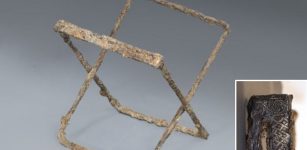 Extremely Rare Medieval Folding Chair Reveals Its Secrets
Archaeology | Oct 13, 2023
Extremely Rare Medieval Folding Chair Reveals Its Secrets
Archaeology | Oct 13, 2023 -
 Iktomi – Native American Spider-Trickster Spirit Whose Stories Teach Moral Values
Featured Stories | Jan 28, 2019
Iktomi – Native American Spider-Trickster Spirit Whose Stories Teach Moral Values
Featured Stories | Jan 28, 2019 -
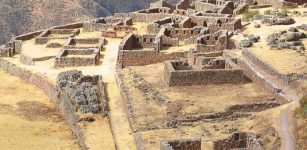 Beautiful Ancient City Of Pisac In The Sacred Valley, Peru – Incredible Inca Ruins
Featured Stories | Jun 22, 2017
Beautiful Ancient City Of Pisac In The Sacred Valley, Peru – Incredible Inca Ruins
Featured Stories | Jun 22, 2017 -
 Ullikummi – Genderless, Blind, Deaf Rock Monster Created For Strategic Purposes In Beliefs Of Hurrian People
Featured Stories | Sep 3, 2024
Ullikummi – Genderless, Blind, Deaf Rock Monster Created For Strategic Purposes In Beliefs Of Hurrian People
Featured Stories | Sep 3, 2024 -
 ‘Saimaluu-Tash’ Time Capsule: Largest Millennia-Old Collection Of Petroglyphs In Central Asia
Civilizations | Nov 20, 2018
‘Saimaluu-Tash’ Time Capsule: Largest Millennia-Old Collection Of Petroglyphs In Central Asia
Civilizations | Nov 20, 2018 -
 Mystery Of The Candelabrum: One Of The Most Enigmatic Ancient Giant Ground Drawings In The World
Featured Stories | Nov 2, 2015
Mystery Of The Candelabrum: One Of The Most Enigmatic Ancient Giant Ground Drawings In The World
Featured Stories | Nov 2, 2015 -
 Yasuke – The First Black Samurai Caused A Sensation In Japan
Featured Stories | Oct 25, 2019
Yasuke – The First Black Samurai Caused A Sensation In Japan
Featured Stories | Oct 25, 2019 -
 Museum Classifies Roman Emperor Elagabalus As Trans – But Modern Labels Oversimplify Ancient Gender Identities
Featured Stories | Nov 28, 2023
Museum Classifies Roman Emperor Elagabalus As Trans – But Modern Labels Oversimplify Ancient Gender Identities
Featured Stories | Nov 28, 2023 -
 Archaeological Evidence Amazon Warrior Women Did Exist Found At Nakhchivan Necropolis, Azerbaijan
Archaeology | Mar 27, 2024
Archaeological Evidence Amazon Warrior Women Did Exist Found At Nakhchivan Necropolis, Azerbaijan
Archaeology | Mar 27, 2024 -
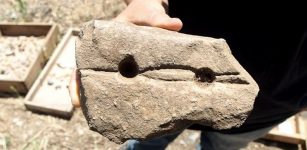 Stone Slab c. 9,000-Year-Old Used In Making Fire Discovered Not Far From Jerusalem, Israel
Archaeology | May 17, 2017
Stone Slab c. 9,000-Year-Old Used In Making Fire Discovered Not Far From Jerusalem, Israel
Archaeology | May 17, 2017 -
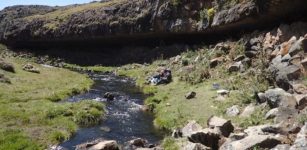 Humans In Africa Fled To The Mountains During The Last Ice Age
Archaeology | Aug 9, 2019
Humans In Africa Fled To The Mountains During The Last Ice Age
Archaeology | Aug 9, 2019 -
 Forgotten Richly Decorated Rock-Cut Cave Churches Of Goreme And Cappadocia
Featured Stories | Dec 27, 2018
Forgotten Richly Decorated Rock-Cut Cave Churches Of Goreme And Cappadocia
Featured Stories | Dec 27, 2018 -
 10 Aztec Symbols Explained
Ancient Symbols | Mar 20, 2018
10 Aztec Symbols Explained
Ancient Symbols | Mar 20, 2018 -
 Rare 13,000-Year-Old Artifacts And Paleoindian Camp Uncovered in Connecticut Shed New Light On The First Ancient People In America
Archaeology | Mar 18, 2022
Rare 13,000-Year-Old Artifacts And Paleoindian Camp Uncovered in Connecticut Shed New Light On The First Ancient People In America
Archaeology | Mar 18, 2022 -
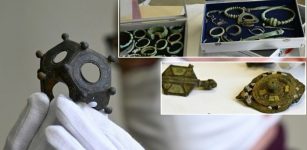 More Than 27,000 Artifacts Illegally Collected By ‘Expert In Archaeology’ – Seized In France
Artifacts | Dec 18, 2020
More Than 27,000 Artifacts Illegally Collected By ‘Expert In Archaeology’ – Seized In France
Artifacts | Dec 18, 2020 -
 DNA Sheds Light On Ancient History Of Dogs All The Way To The Ice Age
Archaeology | Oct 30, 2020
DNA Sheds Light On Ancient History Of Dogs All The Way To The Ice Age
Archaeology | Oct 30, 2020 -
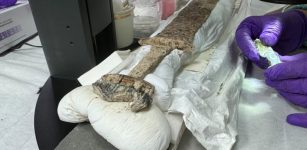 Spectacular 6th Century Sword With Runes Found In Anglo-Saxon Grave Near Canterbury In Kent
Archaeology | Dec 27, 2024
Spectacular 6th Century Sword With Runes Found In Anglo-Saxon Grave Near Canterbury In Kent
Archaeology | Dec 27, 2024 -
 Police Forces That Kept Order In Ancient Streets
Ancient History Facts | Jun 12, 2018
Police Forces That Kept Order In Ancient Streets
Ancient History Facts | Jun 12, 2018 -
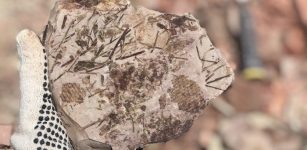 Long-Lost Paleontological Site With More Than 100 Unique Fossils Re-Discovered In Brazil
Archaeology | Jul 4, 2022
Long-Lost Paleontological Site With More Than 100 Unique Fossils Re-Discovered In Brazil
Archaeology | Jul 4, 2022 -
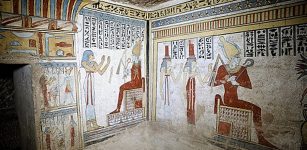 Ptolemaic-Era Tomb With Mummies, Paintings Found In Upper Egypt
Archaeology | Apr 8, 2019
Ptolemaic-Era Tomb With Mummies, Paintings Found In Upper Egypt
Archaeology | Apr 8, 2019

